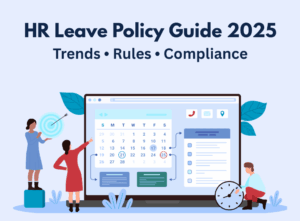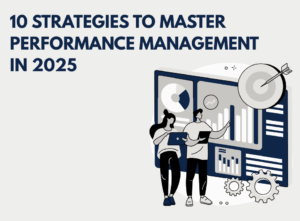As companies become more cautious and risk-averse, innovation has become a buzzword frequently. Any organization serious about staying competitive in today’s business culture must find new ways to generate innovation in their company. It’s no secret that people are the source of all great ideas. And each person has different experiences and perspectives, which makes them particularly capable of thinking outside the box when it comes to problem-solving. So reverse mentoring is a unique way for employees of any age or position to challenge their assumptions and generate fresh ideas for the company. Learn more about this business strategy and how to implement it in your organization.
What is Reverse Mentoring?
Reverse mentoring is a unique initiative that pairs senior leaders with younger employees to learn from each other. The senior employees act as mentors for the younger employees, but the roles are reversed. This mentoring program often occurs in companies with a large generational gap, such as tech companies that employ many younger employees. This initiative promotes mutual learning and facilitates cross-generational communication by helping people from different backgrounds learn from each other. In many cases, senior leaders might be more accustomed to how they did things in the past. Still, it allows them to gain a fresh perspective on challenges and opportunities that new hires are likely to encounter in their careers.
Why Is Reverse Mentoring Important?
Like mentoring, it allows employees to learn from one another. This strategy brings together people of different generations to further break down barriers and build company culture. Furthermore, it also helps younger employees feel more connected to the company and allows them to ask questions and get the advice they need to excel in their careers. Reverse mentoring can also help employees less experienced in their fields gain more confidence in what they do. Also, generating new ideas through communication is essential for any organization to stay relevant in a changing business landscape. This strategy can help in doing both.
How to Implement Reverse Mentoring in Your Company
Steps to implement:
- Identify Mentors
Choose mentors from different departments with diverse perspectives and experiences who are willing and able to participate.
- Ensure Mentor Commitment
Find mentors willing to commit time and effort to mentor their mentees, which is crucial for a successful program. Encourage senior leaders to volunteer or seek enthusiastic individuals.
- Select Suitable Mentees
Match mentees interested in learning more about the company and have specific questions with mentors who can provide guidance and support.
- Establish Regular Meetings
Set regular meetings between mentors and mentees with clearly defined expectations for frequency, duration, and desired outcomes.
- Launch the Program
After filling all the spots, begin the mentoring program, fostering a learning culture, collaboration, and personal growth.
Benefits of Reverse Mentoring
Reverse mentoring is a mutually beneficial relationship that benefits both parties. Moreover, implementing this mentoring program can positively impact the organization’s overall performance, employee satisfaction, and long-term success.
Increased Diversity and Inclusion
This mentoring promotes diversity and inclusion by bridging generational or cultural gaps. Mentees gain insights from mentors with different backgrounds and perspectives, fostering a more inclusive work environment.
Enhanced Learning and Skill Development
Mentees can learn from mentors with expertise and experience in specific areas as this knowledge transfer enhances their skills and accelerates their professional growth.
Fresh Perspectives and Innovation
Reverse mentoring brings new ideas and fresh perspectives to the organization. Mentees, typically younger or less experienced employees, can provide innovative insights and solutions to challenges faced by the organization.
Improved Employee Engagement
Engaging in this mentoring relationship can boost employee morale and job satisfaction. Mentees feel valued and supported, which increases their commitment and motivation toward their work.
Knowledge Sharing and Cross-Generational Collaboration
Reverse mentoring enables the exchange of knowledge and skills between different generations in the workplace. Mentors can share their years of experience, while mentees can introduce new technologies and trends, fostering a collaborative learning environment.
Leadership Development
Leadership Development allows mentors to enhance their leadership skills by guiding and empowering mentees. Mentors can develop coaching and mentoring abilities, which can be valuable in their career progression.
Increased Retention and Talent Development
Reverse mentoring programs can contribute to employee retention by providing growth opportunities for mentees. This process supports and invests in employees and makes them contribute to long-term organizational success.
Breaking Hierarchical Barriers
This mentoring program challenges traditional hierarchical structures by promoting open dialogue and collaboration between employees at different levels. Further, it creates a culture where everyone’s contributions are valued, regardless of their position within the organization.
Building a Learning Culture
This reverse mentorship fosters a learning culture within the organization and encourages continuous learning and development. And it ultimately leads to a more agile and adaptable workforce, capable of responding to industry changes and staying ahead of the competition.
Succession Planning and Knowledge Continuity
Reverse mentoring can help organizations plan succession by preparing the next generation of leaders. Mentees develop the skills and knowledge necessary to take on future leadership roles, ensuring a smooth transition and continuity of knowledge within the organization.
The relationships formed due to this mentoring program can also benefit both parties. Moreover, mentors can use the knowledge they’ve gained to help other employees and assist their mentees in the future. Employees can also use their relationships with their mentors to build connections, ask questions, and promote their ideas.
How to Find the Right People for Your Program
Reverse mentoring is a great way to unite people who might not otherwise interact in your organization. This strategy can encourage cross-generational communication across departments and achieve diversity in your company. When selecting the people for your mentoring program, look for employees who are engaged in their work and eager to learn more about the company. Ask employees interested in participating in the program about their expertise and interests. Select people who have different cultural backgrounds and experiences from each other. It can be beneficial if you have a large demographic of similar employees.
Conclusion
Reverse mentoring is a powerful tool for generating new ideas, cross-generational connections, and building a more inclusive company culture. This strategy can help senior leaders draw out fresh perspectives from younger employees and give them the feedback they need to grow and excel in their careers. These fresh ideas and perspectives can help companies revitalize their creativity and stay competitive in today’s business landscape. Now’s the time to rethink your mentoring strategy and implement this mentoring to generate more organizational innovation and creativity.





